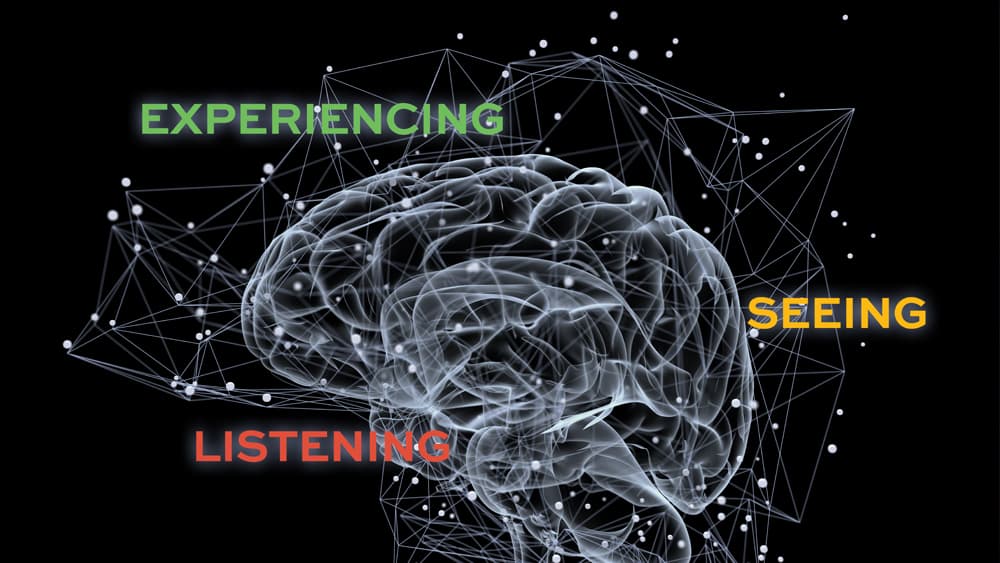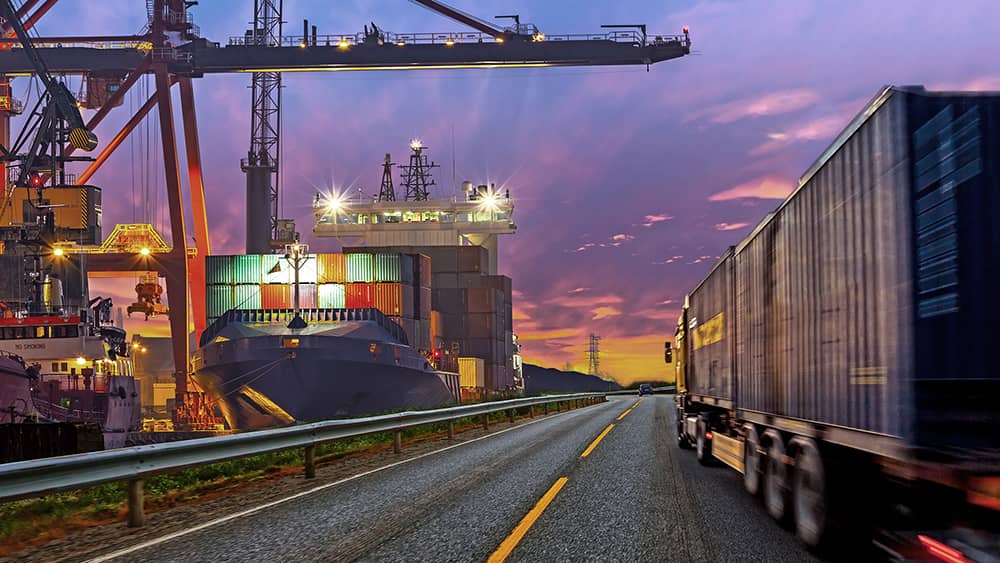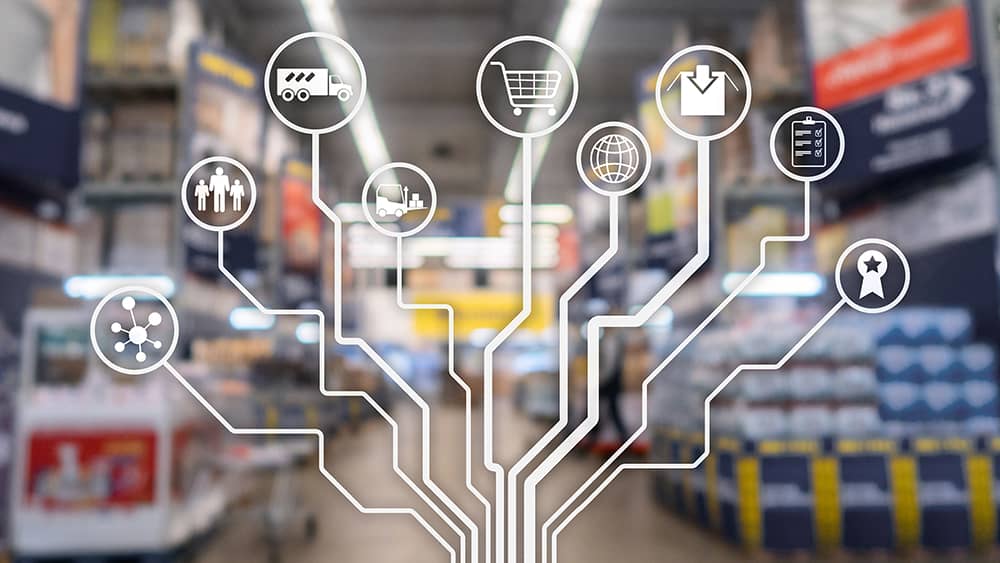Data analytics
Companies produce an ever-growing amount of data, that often goes to waste. But how can the information hidden in this data be extracted and used to a business’ advantage? And what potential applications do data analytics have for the supply chain?
What is data analytics?
Data analytics is the science of analyzing large amounts of data in order to draw conclusions. These conclusions that would otherwise simply be lost in a sea of information. Essentially, data analytics brings order to the vast amounts of data points businesses can easily collect nowadays.
Visualization is thereby a key element in data analytics. Visualizations are created through automation tools that spit out condensed information in the form of visualizations. With their help, businesses can make decisions based on a summary of relevant and trust-worthy information.
Even today, the most common (and easiest) method to create visualizations is to turn an excel spreadsheet into a pie chart, graph, or table. However, recent technologies allow for the creation of more complex visualizations, such as heat maps, infographics, or bubble clouds. Depending on the type of data, a simple graph may be sufficient, whereas other data requires more complex graphics.
Big data and the Internet of Things (IoT)
As the amount of data processed increases, the concept of Big Data has surfaced and essentially covers three aspects. These are:
- Greater variety
- Higher velocity
- Bigger volume
Everything and everyone is producing data points constantly. And, as an increasing number of devices is connected to the internet, a growing number of data is collected, stored and analyzed.
This has led to the creation of the Internet of Things (IoT). This refers to the growing network of physical objects that have internet connectivity and the communication happening among these objects. Big Data and The Internet of Things (IoT) are thereby very connected. Even more so, Big Data powers the IoT.
Why is data analytics important?
With increasingly more complex business operations, companies contribute their own share to the IoT and the increase in Big Data – demand patterns, sales, supply patterns, and much more. In order to digest and draw conclusions from this data, businesses need data analytics. If a demand spike occurs, but the company is unable to understand what has caused the increase, what is that piece of information even worth? Drawing conclusions from such a spike, figuring out what caused it, and implementing concrete actions that follow from that understanding, can have a big impact on success.
Data analytics and the supply chain
Supply chains are typically a part of a business that generate massive amounts of data. Supply chain analytics helps to make sense of all this data by uncovering patterns and generating insights, that would otherwise go left unnoticed.
With increasingly global supply chains, being able to manage that all data becomes extremely important and demands careful data analysis for a variety of reasons. For example, using supply chain analytics can help a business better prepare for the future by taking a look at past patterns.
If ice cream sales increase when it is sunny, production can already be ramped up if good weather is predicted. Making these preparations for the future can allow a company to achieve a more responsive and more effective supply chain, that is tailored exactly to the company market’s needs.
Want to know more? Experience analyzing data in our business simulation games!
Every operation within a company produces data – and this data can be used to the company’s advantage. Using data analytics, companies can draw more accurate conclusions, allowing them to make apt decisions and prepare for the future. This allows them to achieve a leaner and more efficient supply chain.
Do you want to learn how to take advantage of data analytics for your business? Data analytics can be incorporated in the simulation-based learning programs Inchainge offers. Our business simulation games depict virtual companies, that harbor, like in real-life, a ton of data. Data that can be evaluated in preformatted reports, in self-created reports or in some cases, be exported in formats to be further dig through by Excel sheets. A great example of experiential learning about this important topic.
You might want to learn more about

LARG Supply Chain
When setting up a supply chain strategy, important decisions lie ahead. Do you want to run an efficient supply chain organization? Or do you want to be able to respond quickly to market changes and grow your company? Are you dealing with ever more events, that may disrupt your supply chain? Is being sustainable, or becoming circular of strategic importance to you and your business?

Experiential learning
Experiential learning is a powerful way of education that fosters numerous benefits. We truly believe that going through an experience, will result in a better and longer lasting understanding. What is experiential learning exactly? And why should it be implemented? In this article, Inchainge discusses everything you need to know about experiential learning.

Business games
A high-performing value chain needs the collaboration of team members from across the organization. Tearing down silos and creating the right cross-functional mindset, however, can be a serious challenge. So, what do you need in order to achieve success? Ideally, you’d like your team to experiment with different scenarios wherein they learn to overcome various obstacles.

Logistics footprint
Understanding what a logistics footprint is, and why it should be as small as possible can make the decisive difference in competitiveness for a company. But how can a business tackle the size of its logistics footprint? And why does a good warehouse strategy play an important role in doing so? In this article, Inchainge discusses everything you need to know about the logistics footprint.

Supply Chain Volatility
Volatility has always played a crucial role in supply chains, hence in supply chain management. Maybe there is a sudden surge in demand for bottled water because a hurricane is approaching – or perhaps there is a sudden drop in demand for LCD screens because of newer technologies. Inchainge believes it is important that companies make conscious choices about how to deal with volatility and make that a part of how they manage their business.
Dive into our
knowledge base
Alignment
Blended learning
Experiential learning
Learning
Supply chain
Sustainability
- Sustainability
- Carbon footprint
- Circular Economy
- Does Green Governance drive the ride to a sustainable future?
- Everything You Need To Know About Eco-Efficiency
- Greenwashing: Everything you need to know
- Is it possible to measure the Triple Bottom Line?
- Sustainability v/s Circularity
- The 3Ps Series: People
- The 3Ps Series: Planet
- The 3Ps Series: Prosperity
- The Butterfly Diagram
- The Value Hill
- What are the 3Ps of Sustainability?
- What do we know about the Triple Bottom Line?
Value Chain

Hans Kremer
Co-founder and Director at Inchainge
Even before I knew it I took a huge interest in how supply chains, and value chains worked. As a kid I could be glued to a television screen on Wednesday afternoons, to watch short movies about how things were made.
This has resulted in me being a trainer and educator in managing supply chains and value chains. I hugely enjoy to train, educate and learn from others at the same time. An important part of my role is consulting Learning and Development officers. I have the privilege to support them in developing and rolling out learning programs, so they can deliver desired learning outcomes. What I am passionate about is Experiential Learning, since it is so powerful and fulfilling at the same time. For learners as well as for trainers and educators.
In the last 15+ years I have accumulated thousands of training “flight hours” in multiple industries both at home and abroad. I have extensive experience with face-to-face delivery, online delivery and blended learning formats. A significant part of my training sessions I spend on training other trainers.


